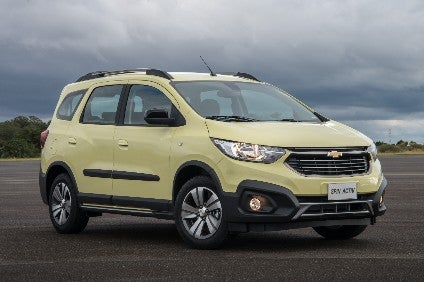
Sales of new vehicles in Brazil in August reached 248,623 units, surprising industry watchers.
This has prompted manufacturers’ association Anfavea to revise – next October – its previously announced forecast of 11.9% year on year growth for 2018.
It now seems certain over 2.5m light vehicles will be sold this year.
In a traditionally strong month (along with July and December), August results beat the most optimistic forecasts. Average daily sale was nearly 11,000 units, up 10% over recent months.
In the first eight months, compared to the same period in 2017, growth reached almost 15%. Automobiles and light commercials, which represent 94% of the total, rose 14%. The overall result, including trucks and buses, was the best since January 2015.
Coming months, however, will have to be compared with 2017, when there was a strong recovery over the disastrous 2016. It is therefore possible the annual growth in 2018 will not reach 14% or 15% but might be very close.

US Tariffs are shifting - will you react or anticipate?
Don’t let policy changes catch you off guard. Stay proactive with real-time data and expert analysis.
By GlobalDataIn a year marked by an 11 day road transport strike and the political games around this year’s general elections that chilled expectations of economic growth, it is likely the auto industry alone will account for about half of the estimated 1.5% 2018 GDP rise.
Yet there will be some en route turbulence. A strong drop in exports to Argentina has already begun to affect 2018 production levels. Other export destinations will hardly compensate for the deep crisis in Brazil’s neighbour – Argentina alone takes 70% of all exports.
So eyes turn to 2019. Today the new president won’t be known until the end of October, nor will the profile of the new congress and the direction in which they send the Brazilian economy. Thus it is difficult to estimate what vehicle sales will be in the short term.
Automotive Business organised the 2019 Automotive Planning Workshop to feel the pulses of market players.
While a double-digit percentage growth in domestic sales of vehicles seems almost certain next year, few dared to say so.
Sindipecas (the association of auto parts suppliers) did present its medium term vision, expecting in 2023 production of the automobile industry (both for domestic and foreign markets) would reach 3.7m vehicles, ie the same as in 2013.
In the short term, products in demand will continue to undergo updates and variation.
VW Brazil president Pablo Di Si estimated 27% of sales by 2020 would be SUVs versus 22% now. This includes the ‘adventurers’ segment [eg Ford Fiesta Active – ed] also known here as ‘pseudo SUVs’. The segment was largely developed first here in Brazil and is slowly spreading into other markets.



